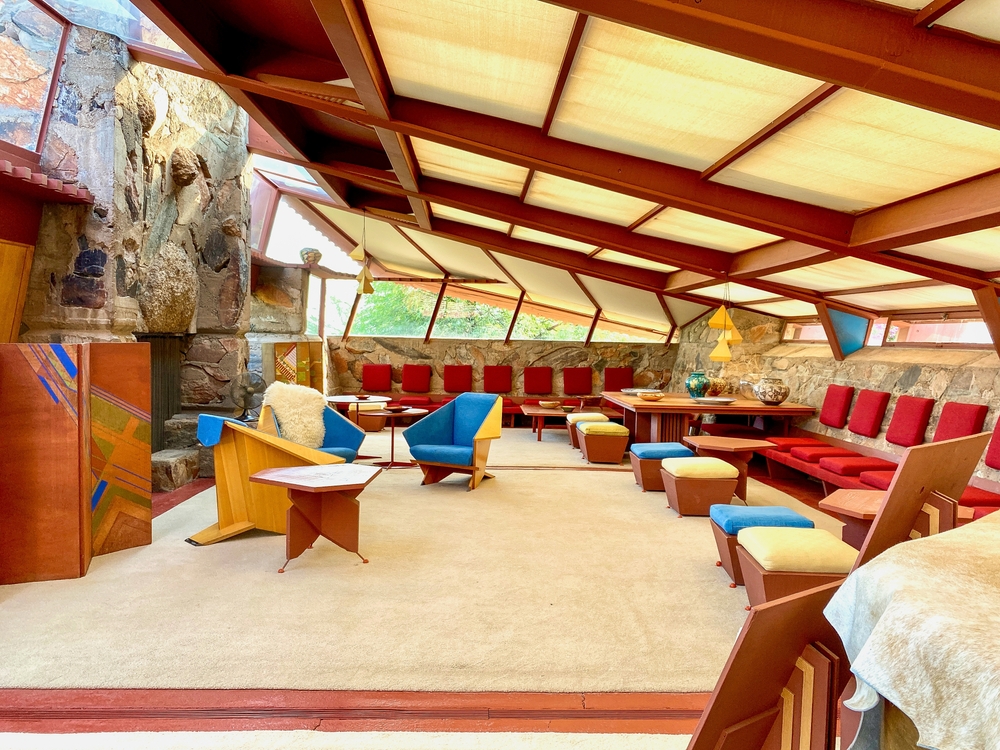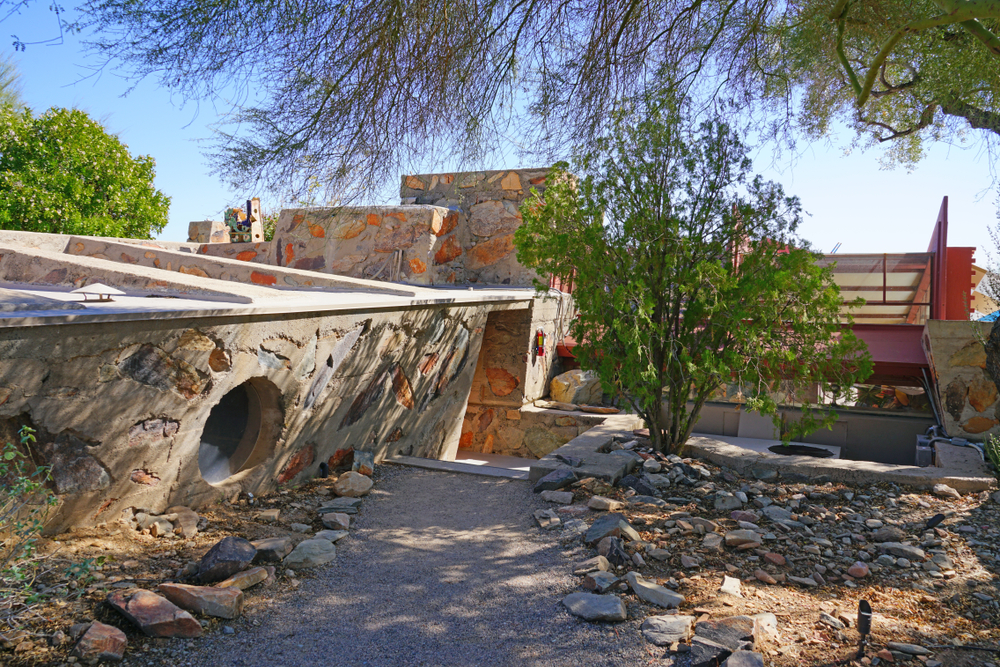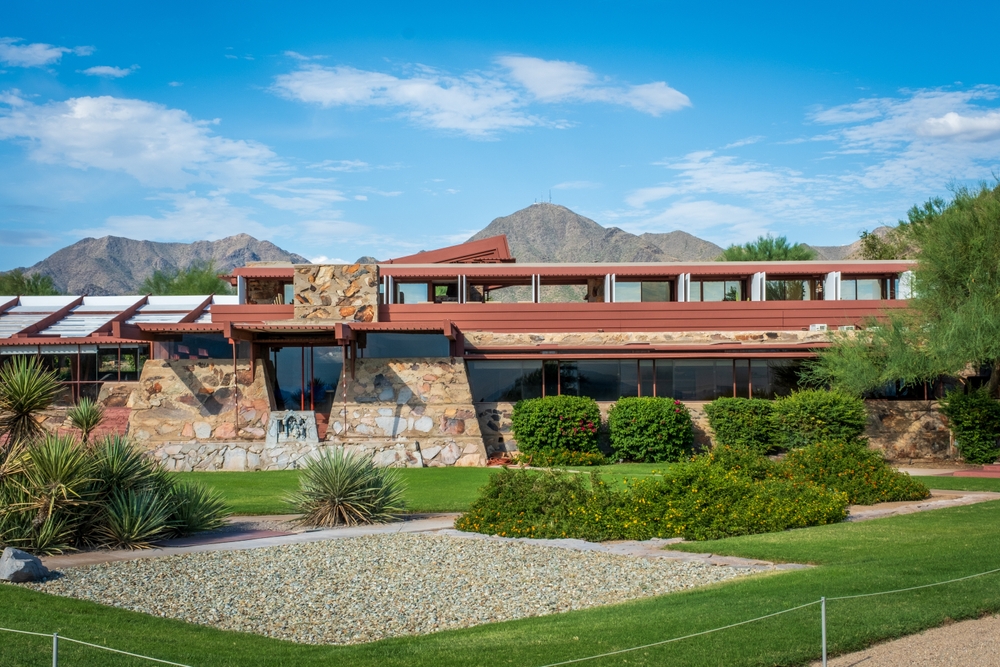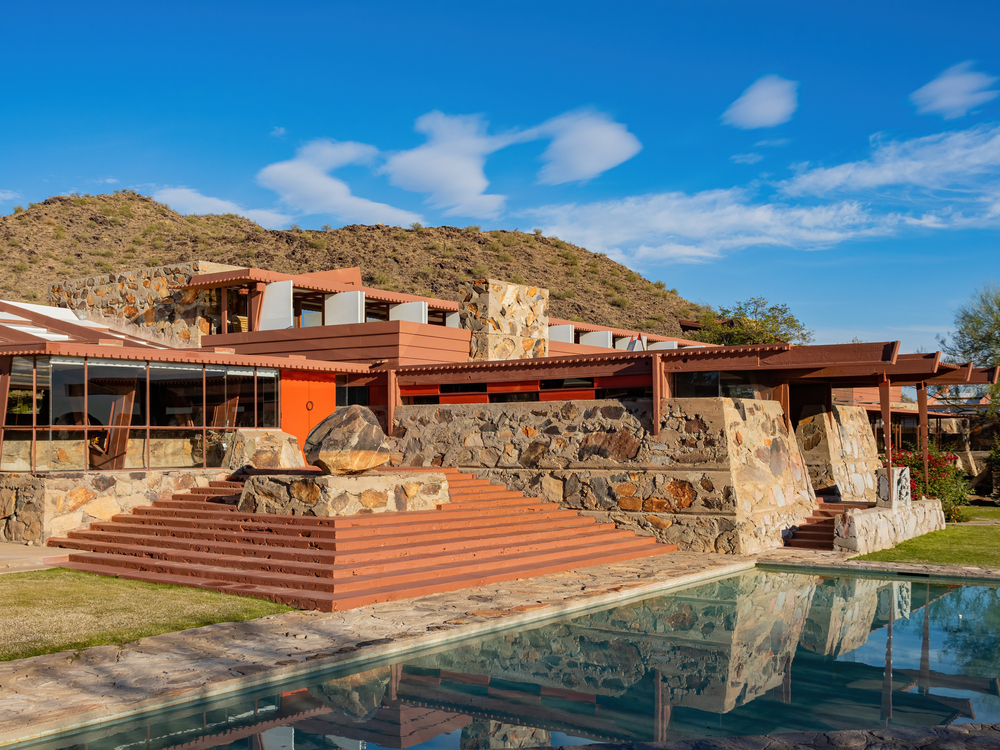Nestled in the rugged foothills of the McDowell Mountains in Scottsdale, Arizona, Taliesin West is not just a home but an architectural manifesto. Designed by the legendary Frank Lloyd Wright in 1937 as his winter residence, studio, and architectural campus, Taliesin West stands as a monument to his innovative vision and profound connection to the desert landscape.
This iconic site, with its unique features, such as the use of locally sourced materials, large windows, open courtyards, and angled roofs, has had a lasting impact on modern architecture in Arizona, influencing design principles that prioritize harmony with nature and sustainable building practices.
A Living Laboratory of Ideas

When Frank Lloyd Wright first arrived in Scottsdale, he was captivated by the arid beauty of the Sonoran Desert. Inspired by the desert’s raw, untamed qualities, he sought to create a space that embraced and celebrated its surroundings. Taliesin West became a “living laboratory” where Wright and his apprentices experimented with materials, construction techniques, and architectural concepts.
Using locally sourced materials such as desert rocks and sand, Wright developed his signature “desert masonry” technique, which gave the structures a sense of belonging to the landscape. Using large windows, open courtyards, and angled roofs further integrated the indoor and outdoor environments, creating a seamless flow between the man-made and the natural.
A Hub of Architectural Education
Taliesin West was more than Wright’s retreat; it was a hub for architectural education. As the home of the Taliesin Fellowship, the campus welcomed aspiring architects who lived, worked, and learned alongside Wright. These apprentices were not just students but active participants in a hands-on learning environment, designing and building structures while absorbing Wright’s philosophy of organic architecture.
This educational legacy continues today through the School of Architecture at Taliesin, a unique institution founded by Wright and his wife Olgivanna in 1932. The school, which operates on both the Taliesin West and Taliesin campuses, offers a hands-on, experiential learning environment that ensures Wright’s principles—innovation, sustainability, and harmony with nature—remain central to architectural education.
Pioneering Sustainability

Long before sustainability became a buzzword, Taliesin West exemplified environmentally conscious design. Wright’s structures were positioned to maximize natural light and ventilation, reducing reliance on artificial cooling and heating. Deep overhangs provided shade, while angled roofs and reflective surfaces deflected the harsh desert sun.
Wright’s innovative use of local materials reduced transportation costs and environmental impact, setting a precedent for sustainable architecture in Arizona and beyond. These principles resonate today, influencing architects and designers seeking to create environmentally responsible buildings in arid climates.
An Enduring Influence on Arizona’s Architecture
The impact of Taliesin West on modern architecture in Arizona is profound and enduring. Wright’s approach—rooted in the idea that buildings should reflect their environment—has become a defining characteristic of architectural design in the state. From luxury homes in Paradise Valley to cultural landmarks like the Arizona Biltmore Hotel (which Wright consulted on), his influence is woven into Arizona’s architectural identity, evoking a sense of appreciation and respect.
Architects across the region continue to draw inspiration from Taliesin West, incorporating elements such as natural materials, open floor plans and designs that respect the surrounding environment. Wright’s emphasis on sustainability and harmony with nature, championed decades ago, remains more relevant than ever in today’s era of climate-conscious design.
A World Heritage Site
In 2019, Taliesin West was designated a UNESCO World Heritage Site, cementing its status as a global icon of modern architecture. This recognition underscores its historical significance and its ongoing relevance as a source of inspiration for architects, students, and visitors.
Visiting Taliesin West

Today, Taliesin West is open to the public, offering guided tours that provide a glimpse into Wright’s genius and the creative spirit that shaped the campus. Visitors can explore the drafting studio, Wright’s private quarters, and the outdoor spaces that reflect his deep appreciation for the desert.
Conclusion
Frank Lloyd Wright’s Taliesin West is more than a masterpiece of design; it is a beacon of innovation and a testament to the enduring power of architecture to connect us with the world around us. As a cornerstone of modern architecture in Arizona, it continues to inspire new generations of architects to build with purpose, respect the environment, and push the boundaries of creativity. For Scottsdale, Taliesin West is not just a historical treasure—it is a living, breathing symbol of the transformative power of design.






